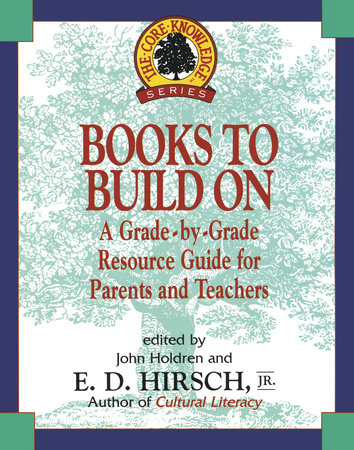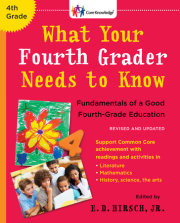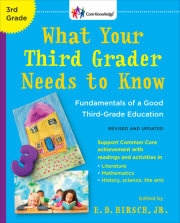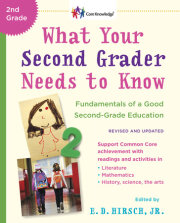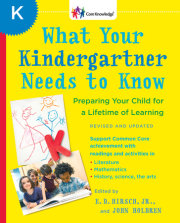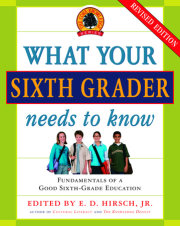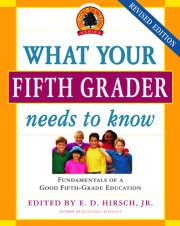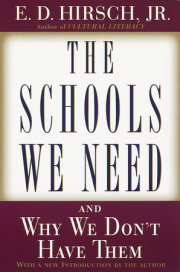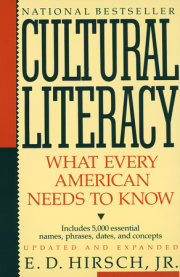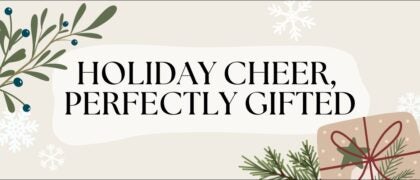LANGUAGE ARTS
Introduction
Language Arts is a term used by schools to refer to reading and writing, spelling, grammar, vocabulary, creative writing, expository writing, library and research skills, literature, drama, public speaking, and more. While all of these should be taught at some point, the emphasis varies according to grade level.
In the primary grades—kindergarten through third grade—the emphasis of schools must be, first and foremost, on the crucial mission of early education: teaching children to read. As Elizabeth McPike of the American Federation of Teachers has put it, in no uncertain terms,
If a child in a modern society like ours does not learn to read, he doesn’t make it in life. If he doesn’t learn to read well enough to comprehend what he is reading, if he doesn’t learn to read effortlessly enough to render reading pleasurable, if he doesn’t learn to read fluently enough to read broadly and reflectively across all content areas, his chances for a fulfilling life, by whatever measure—academic success, financial success, the ability to find interesting work, personal autonomy, self-esteem—are practically nil.
While it is almost universally agreed that children should learn to read in the primary grades, there is disagreement about how to achieve that goal, as suggested by the subtitle of a classic study of the teaching of reading, Jeanne Chall’s Learning to Read: The Great Debate. But as that study and others have demonstrated,2 while fashions come and go in education, pulling schools toward one pedagogical extreme or another, there is a reasonable middle ground that is best for children.
This middle ground balances two approaches to the teaching of reading and writing that some educators (wrongly) see as mutually exclusive. The first approach emphasizes the systematic teaching of the “nuts and bolts” of written language: letter-sound combinations (phonics), handwriting, punctuation, grammar, spelling, vocabulary, sentence structure, paragraph form, and other rules and conventions. The second approach emphasizes the need for children to be nourished on a rich diet of meaningful poetry, fiction, and nonfiction, and to be given frequent opportunities to use language in creative and expressive ways.
In schools, both of these approaches need to be embraced, for the good of the children. In particular, at the time of this writing, many elementary schools need to pay much more attention to the “nuts and bolts”: they need to take steps to balance a worthwhile emphasis on literature and creative expression with an equally necessary emphasis on the basic, how-to skills of reading and writing.
Parents can support a child’s growth as a reader and a writer, but the schools, not parents, are responsible for teaching the nuts and bolts of language. Parents can reinforce what is (or should be) taught in school by playing language games with their children, by helping them read books for beginning readers, by engaging them in fun and useful writing activities (letters to relatives, party invitations, grocery lists), and more. To help in these endeavors, we have included below a selection of books and other resources on “Reading and Writing: Kindergarten—Grade 2.” These are meant to complement, not replace, the reading series and associated materials that schools use to teach reading and writing.
Without question, the single most important and helpful thing parents can do is to set aside fifteen or twenty minutes regularly, daily if possible, to read aloud to their children. Reading aloud is, of course, also a regular part of any good classroom. Reading aloud should continue long after children have learned to read independently.
Whether we are reading aloud to children or recommending books to them as they become independent readers, the question remains, what should they read? Some children will answer this for themselves: set loose in a library, they will walk out with a stack of books. But many children can benefit from some considered guidance and suggestions.
The world of children’s literature has something for every taste and diet. It includes such sustaining fare as Newbery Award-winning titles, or the works of acclaimed writers like Frances Hodgson Burnett or Scott O’Dell or Lloyd Alexander, or such cheering series as the “Ramona” books of Beverly Cleary and the Pippi Longstocking stories of Astrid Lindgren, to name just a few. It includes popular “lite” fare, such as Nancy Drew or Hardy Boys mysteries, or the Baby Sitters’ Club books. It includes novelizations of hit television shows and movies, such as the Star Trek and Star Wars books. It includes the literary equivalent of junk food in the Goosebumps series of horror stories.
An occasional sweet treat, of course, does no harm if you maintain a balanced diet. What’s unhealthy is to make a diet of nothing but sweet treats. That is why we need to give children the opportunity to hear and read nourishing and sustaining literature. Schools in particular need to make thoughtful and responsible choices about the books they read to children and ask children to read. Especially in light of the dramatic disparity in children’s home circumstances, schools should, for the sake of fairness, expose children to a common core of literature that has stood the test of time, to poems and stories with wonderful characters, adventure, humor, and language that have gripped the imaginations of readers for generation upon generation.
Even such classic literature, however, presents us with a vast field of choices. Inevitably, in choosing some titles and not others, a degree of arbitrariness enters into the selection—an arbitrariness we have endeavored to minimize by involving a wide range of people in the process of selecting the works suggested here.
Still, one might say, why read Charlotte’s Web but not Stuart Little? Or why read Charlotte’s Web instead of Black Beauty? Or why read Charlotte’s Web at all? Such questions could go on forever, but they miss the point. The point of defining a core of selected works is not to exclude, but to ensure that children will be exposed to a broad range of enriching literature, without glaring repetitions and gaps; that the children’s knowledge of good literature will build year by year; and that their experience of literature will sometimes be enriched by its connection to studies in other disciplines (such as, for example, the Greek myths recommended for second grade, which may be connected to the study of ancient Greek civilization in World History).
The works of poetry, fiction, and drama suggested here are meant to constitute a core of enriching literature. Teachers and parents are strongly encouraged to expose children to many more stories and poems than those listed below, including classic picture books, read-aloud books, perennial favorites by beloved children’s writers, popular favorites by contemporary writers, biographies, books about art and music, lots of nonfiction, and of course books that the children themselves choose. For suggestions on more good reading, see General Resources, Guides to Good Reading (this page–this page).
Language Arts in the Core Knowledge Sequence: A Summary
The Language Arts section of the Core Knowledge Sequence includes guidelines for the teaching of reading and writing, and specific recommendations for works of poetry, fiction, nonfiction, drama, and great speeches. Some works are recommended because they are connected with topics in the History section of the Sequence. The recommended works are far from comprehensive, and are intended as a starting point for further explorations in literature and language.
Here is a brief summary of the main topics in the Language Arts section of the Core Knowledge Sequence:
• Kindergarten: Children are taught to recognize, name, and write the letters of the alphabet (uppercase and lowercase letters), and receive systematic instruction and practice in decoding letter-sound correspondences. They read simple, phonetically controlled stories written in words that use the letter-sound patterns they have learned. They engage in many oral language activities, and are offered many opportunities to express themselves in print. They are offered some familiar sayings and proverbs.
Children are introduced, through reading aloud, to a varied selection of poetry with strong rhyme and rhythm, including “Mother Goose” and other traditional rhymes. They are also introduced (through reading aloud complemented by discussion, role playing, art projects, and more) to a core of literature, including: Aesop’s fables, tales from the Brothers Grimm and other favorite stories (for example, “Cinderella,” “Snow White,” “The Ugly Duckling,” “Chicken Little,” “Little Red Riding Hood,” and more), favorite tales from diverse lands and cultures (for example, “How Many Spots Does a Leopard Have?” “Tug of War,” “The Legend of Jumping Mouse,” “Momotaro: Peach Boy”), some more recent children’s classics (“The Velveteen Rabbit,” selections from Winnie-the-Pooh), and selected tall tales (Johnny Appleseed, Casey Jones). Teachers and parents are encouraged to supplement this core of literature with many other works, including books the children themselves choose.
• Grade 1: Children continue systematic instruction and practice in decoding letter-sound correspondences, working toward the goal of more independent reading and writing. They master common “sight words” (of, are, is, and so on). They read phonetically controlled stories written in words that use the letter-sound patterns they have learned, and, with assistance as needed, they read “beginning reader” books that are not phonetically controlled (see this page–this page for suggested titles). They are offered many opportunities to express themselves in print, and they get regular practice, about thirty minutes per school day, in handwriting and in writing words and sentences dictated by the teacher. They learn some conventions of written language, including capitalization (first word of sentence, names, I), end punctuation (period, question mark, exclamation point), making words plural by adding s, and writing common contractions with an apostrophe (for example, isn’t, I’m, don’t). As they learn these conventions, they sometimes go back over what they have written and correct their mistakes. They are offered some familiar sayings and proverbs.
Children are introduced, through reading aloud, to a varied selection of poetry, both familiar (more “Mother Goose” and other traditional rhymes, selections from Robert Louis Stevenson’s A Child’s Garden of Verses, “The Owl and the Pussycat,” “Thanksgiving Day: Over the river and through the wood”) and more recent (poems by Robert Frost, Langston Hughes, Eloise Greenfield, and others). They are introduced (through reading aloud complemented by discussion, role playing, art projects, and more) to a core of literature, including: more Aesop’s fables, folktales from around the world (“The Boy at the Dike,” “Brer Rabbit” stories, “The Frog Prince,” “Hansel and Gretel,” “How Anansi Got Stories from the Sky God,” “Issun-Boshi: One-Inch Boy,” “It Could Always Be Worse,” “The Knee-High Man,” “Medio Pollito,” “Pinocchio,” “Rapunzel,” “Tom Thumb,” “Why the Owl Has Big Eyes,” and more), and some more recent children’s classics, such as “The Tale of Peter Rabbit” and selections from The House at Pooh Corner. They take part in a drama and learn about some terms and conventions of drama, such as actors and actresses, costumes, and scenery. Teachers and parents are encouraged to supplement this core of literature with many other works, including books the children themselves choose to read or be read.
Copyright © 2009 by E. D. Hirsch, JR.. All rights reserved. No part of this excerpt may be reproduced or reprinted without permission in writing from the publisher.





